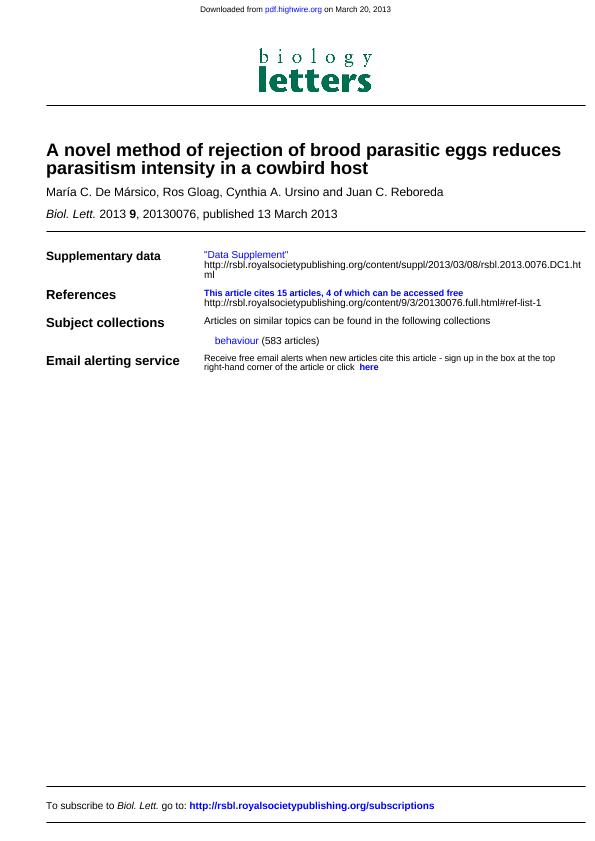Artículo
A novel method of rejection of brood parasitic eggs reduces parasitism intensity in a cowbird host
Fecha de publicación:
03/2013
Editorial:
The Royal Society
Revista:
Biology Letters
ISSN:
1744-9561
e-ISSN:
1744-957X
Idioma:
Inglés
Tipo de recurso:
Artículo publicado
Clasificación temática:
Resumen
The hosts of brood parasitic birds are under strong selection pressure to recognize and remove foreign eggs from their nests, but parasite eggs may be too large to be grasped whole and too strong to be readily pierced by the host’s bill. Such operating constraints on egg removal are proposed to force some hosts to accept parasite eggs, as the costs of deserting parasitized clutches can outweigh the cost of rearing parasites. By fitting microcameras inside nests, we reveal that the Neotropical baywing (Agelaioides badius), a host of the screaming cowbird (Molothrus rufoaxillaris) and shiny cowbird (Molothrus bonariensis), instead circumvents such constraints by kicking parasite eggs out of the nest. To our knowledge, this is the first report of a passerine bird using its feet to remove objects from the nest. Kick-ejection was an all-or-nothing response. Baywings kick-ejected parasite eggs laid before their own first egg and, if heavily parasitized, they ejected entire clutches and began again in the same nest. Few baywings were able to rid their nests of every parasite egg, but their novel ejection method allowed them to reduce the median parasitism intensity by 75 per cent (from four to one cowbird eggs per nest), providing an effective anti-parasite defence.
Palabras clave:
Brood Parasitism
,
Antiparasitic Defense
,
Agelaioides Badius
,
Baywing
Archivos asociados
Licencia
Identificadores
Colecciones
Articulos(OCA CIUDAD UNIVERSITARIA)
Articulos de OFICINA DE COORDINACION ADMINISTRATIVA CIUDAD UNIVERSITARIA
Articulos de OFICINA DE COORDINACION ADMINISTRATIVA CIUDAD UNIVERSITARIA
Citación
de Marsico, Maria Cecilia; Gloag, Ros; Ursino, Cynthia Alejandra; Reboreda, Juan Carlos; A novel method of rejection of brood parasitic eggs reduces parasitism intensity in a cowbird host; The Royal Society; Biology Letters; 9; 3; 3-2013; 1-4; 20130076
Compartir
Altmétricas




